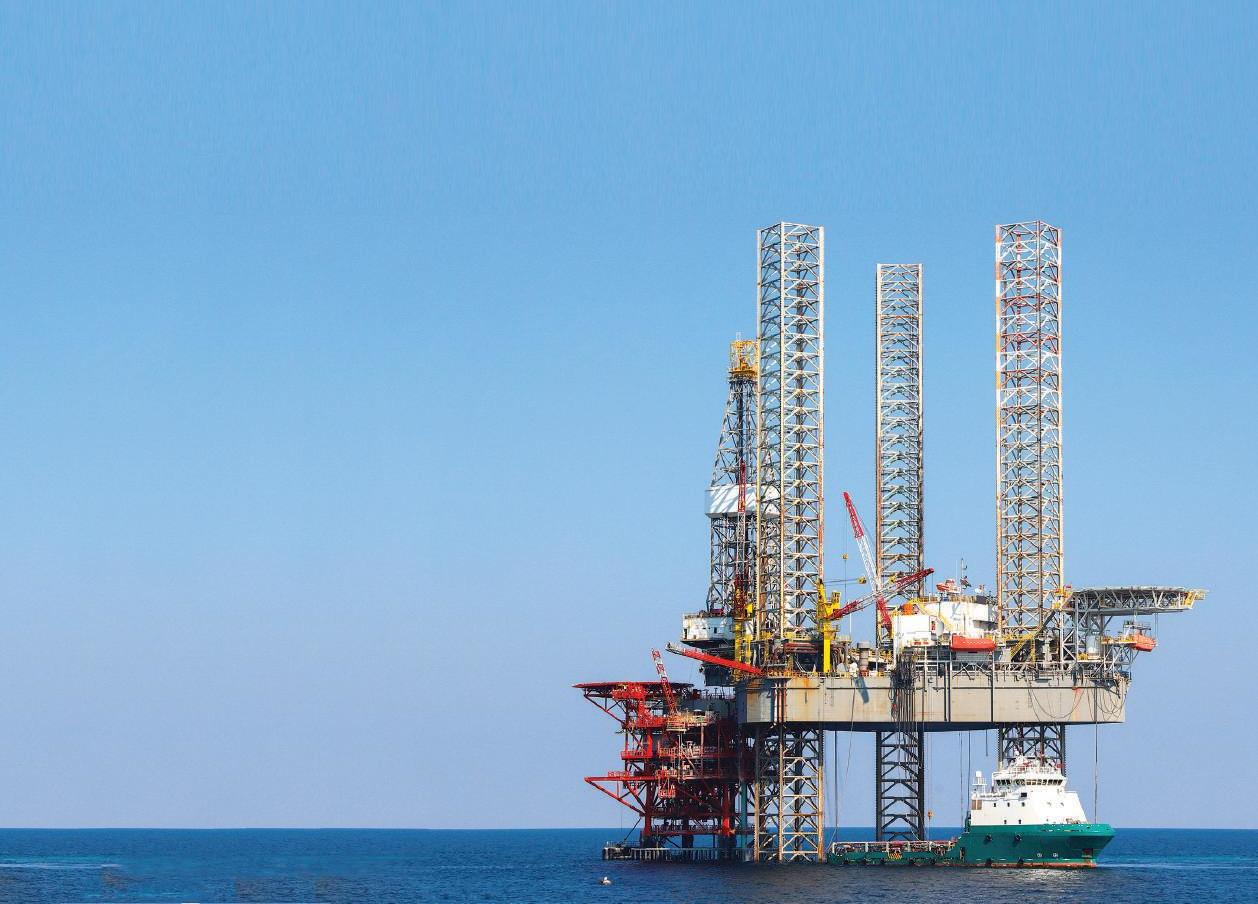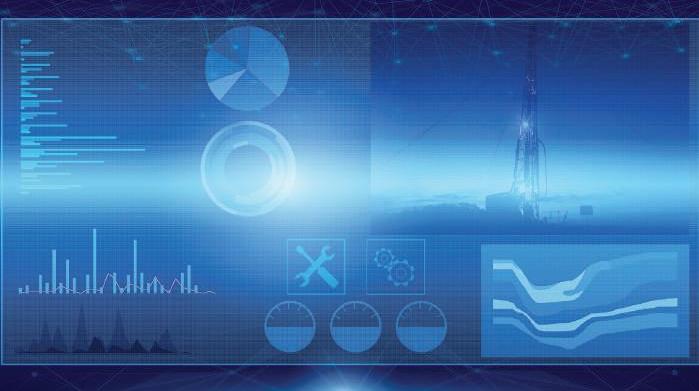
7 minute read
Lean, clean and digital – the future of subsea operations
Lean, clean and digital - the future of
subsea operations
Digital solutions are critical for optimised subsea operations, say Dean Amison, subsea global product management executive and Mario Alonso Rincon, digital solutions product leader, Baker Hughes.
With the drive towards more distant and deeper subsea activity, unlocking the enabling power of data is essential.
WHAT DO WE mean when we talk about digital? Current working conditions in all major business sectors have made that question more pressing than ever before, as deskbased workers get to grips with new digital tools. In heavy industries, including oil and gas, investments in automation have reduced dependency on human activity, and are truly coming into their own.
This is largely because over the past ten years or so, an operational climate has developed which favours solutions, tools and techniques that empower decision-makers; reduce human intervention; streamline use of equipment, chemicals and logistics; and build institutional memories.
In sub-sea operations, digital is often presented as the solution to the short and long-term challenges the industry faces, namely: • The need for operational efficiencies in the face of fluctuating cost models • An ageing workforce that is retiring from positions of expertise and experience • A drive towards more distant and deeper subsea activity • A growing demand for environmental protection from stakeholders, policymakers and the general public The ongoing need for safe operations and working conditions A price environment subject to any number of external and internal shocks.
Defining digital
However, this doesn’t really answer the original question.
When we talk digital what we’re really talking about is data. How to extract it, manage it, understand it, share it, and act on it as quickly and efficiently as possible. How to turn years of experience and expertise into bits and bytes that can be widely disseminated and understood; and how to use previously unavailable information to build knowledge and insight.
In its broadest sense, digital comes down to sifting through complexity to bring the most useful data to the right user at the right time. It’s about giving data context and clarity, and building highly usable tools around it.
And where humans meet machines, it is about turning data into images and intuitive interfaces to give users an all-knowing, allseeing co-pilot to support operational decision-making.
Digital has suffered from the sheer, overwhelming volume of data involved. We are all familiar with the term Big Data, but that now feels like an inadequate description. Even the more rudimentary digital systems can produce what might better be described as Gigantic or Colossal Data, and it is still sitting in different places, unconnected, in different formats, and lacking context.
Intelligent, evidence-based decisionmaking is tantalisingly, frustratingly close. But for many organisations, data is a caged giant: a barrier to insight rather than an enabler.
The life of field
This is where our concept of Life of Field Digital Solutions for subsea operators comes into play, just one of the many digital enablement aspects. We wanted to give our clients the tools they need to unlock that giant, and use it to power useful and operational systems – not just theoretical possibilities, or science-fiction gimmicks.
Our Life of Field Digital approach is based on a number of core concepts. We believe
that making more intelligent, evidence-driven decisions is of value at every stage of an asset’s or field’s lifetime, and that digital solutions consequently need to take a longterm view. We know that as data flows increase, the ability to distinguish the signal from the noise becomes critical, and so the ability to sift through complexity to see the most critical information for a subsea system, is more than a short-term solution.
We recognise that when decision-making is powered by digital solutions, operators can be more focused on the future rather than assessing the past. Potential problems can be identified before they become critical, enabling operators to advance, defer or consolidate activities safely and efficiently.
We also know that digital solutions have to do more than bring intelligence, in a joined-up way, to operators. They need to be centred on individual users and the details of what those specific users need to do every day.
Finally, we are committed to the idea that digital is best designed, implemented, and supported by suppliers and consultants who understand not just the technology they are working with but also the context in which they are applying it. Digital is not an afterthought: instead it is integral from the initial design of a concept, manufacture, installation and finally operation.
The following examples illustrate how this translates into real-world situations in two critical areas of subsea operations.
Equipment integrity management – keeping flow in the pipe
Digital can prove transformative for onshore subsea engineers tasked with optimising asset uptime and availability while managing maintenance schedules and planning any necessary interventions, reporting on key metrics, efficiency targets and risks, and making investment recommendations.
The challenge here is the limited set of data to which they currently have access. Only a low percentage of subsea data from distributed control systems (DCS) is available onshore, and although analysis and visualisation is critical it is also complex and time-consuming. Simplifying the decision-making process is operationally advantageous, but engineers need more evidence than they often have.
The Baker Hughes solution for equipment integrity management is based on: • Sensors that can be integrated with well, riser and subsea production system (SPS) equipment in a variety of locations to give a broader view • Agnostic application modules that can analyse and integrate data on equipment from any manufacturer • Customisable screens for onshore personnel so they can make decisions that are right for each site, project or asset • Practical advanced analytics, combined with our knowledge, expertise, and service
advice, and amplified by considered use of artificial intelligence • Providing future-oriented analysis that can predict failure points and expected lifetime of equipment. It supports live inventory management by automatically tracking past, present and future maintenance and recertification. It also accesses upgrade history and last-timepurchase advice to proactively alert engineers to upcoming equipment obsolescence.
This is a solution that onshore engineers can adapt for a single asset or an entire fleet of wells. It ensures that they can develop and implement a standard for all subsea projects with the confidence of knowing that the system is being managed to industry standards.
Digital is not an afterthought.”
Flow assurance management –keeping the pipe flowing
For production and flow-assurance engineers, data analysis is already fundamental to the job, from well testing to field characterisation. It also requires a lot of what-if analysis to determine optimum operational set points, like minimum water production, or to optimise required chemical injections. Nonetheless digital solutions can make a big difference.
The problem here is primarily with the hardware. Subsea meters typically consolidate a number of measurements; certain metering types, like manifold mount meters, are not always available at every well; and subsea flow meters only provide point measurements – which means discrepancies get missed, just one meter failure can affect accuracy and analysing evolving trends is extremely difficult.
Specifying the best flow-assurance, riskmonitoring solution for a given project is a
Subsea operations will need to be smart, to face new and existing challenges.

tough ask. Meters need to be selected before drilling commences, which can lead to lengthy cycle times, while radioactive sources, such as those in multi-phase flow metering (MPFM), can limit applicability.
Our analysts and engineers wanted to enhance production with accurate metering solutions that covered SPS infrastructure, wells and risers. We are developing a distributed flow-metering (DFM) solution that combines the best of virtual and physical metering, and which integrates measurements from downhole, trees, and the wider Subsea Product System (SPS).
By using the intelligence of multiple flow sensors to simplify the infrastructure, our clients can measure each well with only a water-cut meter at the tree instead of a bulky MPFM, while still securing accurate multiphase flow measurements with optimised subsea instrumentation. With added analytics and expertise, the solution provides flow engineers with a whole-system view, allowing them to monitor conditions during operations, start-up and well cooldown and make recommendations on operational procedures. Overall, the solution lowers costs, shortens lead times and removes flow metering from the project-critical path.
Conclusion
Over the past few years, the industry has gone through a fundamental change: optimal production, minimal downtime, operational efficiency and environmental considerations are the pillars on which a successful operation will be built.
There will always be new challenges, new shocks, and new threats, but the three perma-challenges will remain: cost control, carbon emissions and HSE risk. To face these challenges in their current and future forms, subsea operations will need to be smart. They will need to be lean, clean and digital. The technology is there. Now we need leadership to focus efforts on the most practical, valuable solutions to make this impact. n










